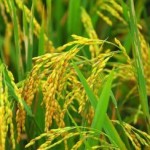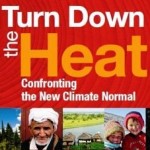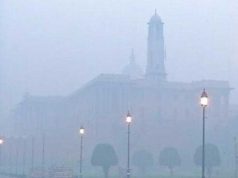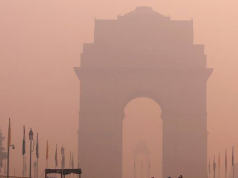In one year, India’s ozone pollution damaged millions of tons of the country’s major crops, causing losses of more than a billion dollars and destroying enough food to feed tens of millions of people living below the poverty line.
These are findings of a new study co-authored by researchers at Scripps Institution of Oceanography, UC San Diego, which looked at the agricultural effects in 2005 of high concentrations of ground-level ozone, a plant-damaging pollutant formed by emissions from vehicles, cooking stoves, and other sources. Able to acquire accurate crop production data for 2005, the study’s authors chose it as a year representative of the effects of ozone damage over the first decade of the twenty-first century.
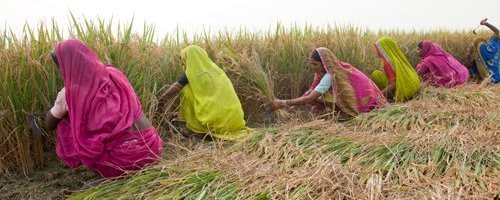
Rising emissions are causing severe ozone pollution in some of India’s most populated regions. Pollution in Delhi, the nation’s capital, has reached levels comparable to Beijing, one of the most polluted cities in the world, according to India’s Air Monitoring Center.
The main component of smog, ozone at ground level can cause leaf damage that stifles plant growth, injuring and killing vegetation. There are currently no air quality standards in India designed to protect agriculture from the effects of ground-level ozone pollution, according to the new study. Ground-level ozone is formed when nitrogen oxides, carbon monoxide, and volatile organic compounds react with sunlight after the chemicals’ release from vehicles, industry, or burning of wood or other plant or animal matter.
According to the new study published on August 14, 2014, in Geophysical Research Letters, a journal of the American Geophysical Union (AGU), surface ozone pollution damaged 6 million metric tons (6.7 million U.S. tons) of India’s wheat, rice, soybean, and cotton crops in 2005.
Veerabhadran Ramanathan, a Professor of Climate and Atmospheric Sciences at Scripps, said that unlike most studies, which look at the effect emissions will have on agriculture decades in the future, the new study examined how ozone emissions are already affecting crops in India. He said the new study could help spur interest in the issue and help policymakers enact new air quality standards or mandate use of new technology to cut emissions.
“The (amount of lost wheat and rice) is what surprised me,” he said.
India could feed 94 million people with the lost wheat and rice crops, about a third of the country’s poor, according to Sachin Ghude, an atmospheric scientist at the Indian Institute of Tropical Meteorology (IITM) in Pune, India and lead author of the new study. There are about 270 million Indians that live in poverty, according to the study.
Wheat – one of the country’s major food sources – saw the largest loss by weight of the four crops studied in the new paper, with ozone pollution damaging 3.5 million metric tons (3.8 million U.S. tons) of the crop in 2005. Another major food source, rice, saw losses of 2.1 million metric tons (2.3 million U.S. tons), according to the new study.
Cotton – one of India’s major commercial crops – lost more than five percent of its 3.3 million metric ton (3.6 million U.S. tons) annual output in 2005, costing the country $ 70 million, according to the new research.
Ghude said the new paper, which is the first to quantify how much damage India’s ozone pollution has caused the country’s major crops on a national level, could help policymakers craft new ozone pollution standards.
It could also help India, a country with a high rate of poverty, as the country implements a new law that subsidizes grain for two-thirds of the country’s residents, he said. The new Food Security Bill requires the country to provide 61.2 million metric tons (67.5 million U.S. tons) of cereal grains – that include wheat and rice – to India’s poor each year at a subsidized rate. The new study found that the 5.6 million metric tons (6.2 million U.S. tons) of wheat and rice lost to ozone pollution was equal to 9.2 percent of the new law’s subsidized cereal requirement.
Under the new law, residents who qualify to receive cereal at the subsidized rate can purchase 60 kilograms (132 pounds) of grain per year. Based on these numbers, the 5.6 million metric tons (6.2 million U.S. tons) of wheat and rice lost could therefore feed 94 million people in India, according to the study.
The researchers calculated the amount of total crop damage from ozone pollution by comparing emissions estimates from 2005 with data about how much ozone each of the four crops could withstand. Plants start to exhibit damage when they are exposed to ozone levels that reach 40 parts per billion or above, according to previous research.

